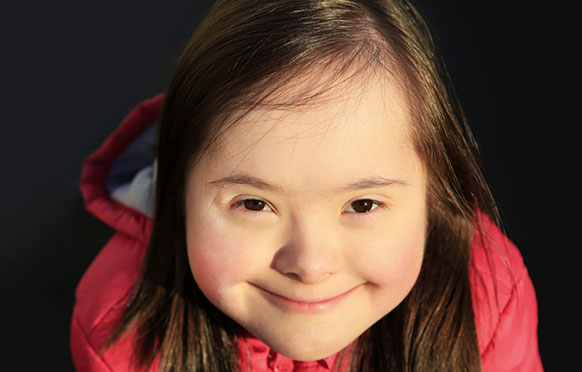
Fact Sheet FS1286
Introduction
Individuals with developmental disabilities have many strengths, but can at times exhibit challenging, problematic, or unfamiliar behaviors. Working with this clientele requires an understanding of the common triggers and meaning of challenging behaviors, and the skill set needed to manage them. To be an effective facilitator, it is critical that behavior is under control before you begin to teach or conduct a program.
What Is Behavior and Why Does Problematic Behavior Occur?
Behavior is how one acts or conducts oneself especially towards others. It is functional, purposeful, and observable. Behavior is also a form of communication. All behaviors, even negative or problematic behaviors, serve a purpose. When there is language delay or difficulty, behavior becomes an even more important vehicle for communication. According to Lohrmann and Malley (n.d.) "Problem behavior is a way of letting us know there is an unmet need." Usually, maladaptive behavior is the result of efforts to cope with experiences which may be confusing, disorienting, frustrating, or frightening.
Problematic behavior can occur for many reasons and may be exhibited in a variety of ways. Some typical problematic behaviors include: aggression, impulsivity, out-of-seat, and interfering. Aggression may be physical, verbal, or anger directed at another person, self, or object. Impulsivity means doing things or tending to do things suddenly and without careful thought or planning. Out-of-seat behavior may include standing, walking around the room, or leaving the room. Interfering with others may take the form of interrupting or disrupting another person's activity or space.
Individuals with developmental disabilities behave in particular ways for a reason. They could be having difficulty transitioning from one activity to another and may need to be prepared for moving on. They may be having difficulty understanding and following directions, especially if the directions are multi-step. This may lead to frustration, lack of follow-through, or falling behind. They might feel out of control or anxious when there is a lack of structure in the environment. There may have been a change made in the way the furniture in the room was arranged. It is important to keep these individuals engaged in a task as much as possible while also being aware of sensory overload. Sensory overload occurs when a person's senses become overstimulated. It can be triggered by environmental factors like noise, lights, extreme temperature change, or tactile sensations.
Types of Problematic Behaviors and How to Manage Them
As you get to know your program participants, you may be able to figure out why problematic or negative behaviors occur, and you may be able to prevent them. Problematic behavior can be categorized in three ways: attention-seeking, work avoidance, or escape.
Behavior may be attention-seeking. Some individuals express their need for attention through inappropriate behavior. Some effective behavior management techniques include:
- Ignoring the behavior: Use a technique called planned ignoring. This means do not look at or talk to the person. Ignore problematic behavior and give individuals the attention they crave when their behavior is appropriate.
- Teaching a replacement behavior: Model or suggest the appropriate behavior (for example: demonstrate how to correctly utilize an object or use proper voice volume and tone).
- Redirecting: Redirect the person's attention away from the inappropriate behavior by removing the trigger (for example: objects, location, people, or topic of conversation). Sometimes a participant's behavioral response may trigger another participant's behavior. In this event, it is important to remove the participant displaying problematic behavior from the immediate environment.
- Assigning a task: Give the individual a task or responsibility that makes them feel important and provides the recognition that they are seeking through disruptive behavior. This is another example of redirection.
- Separating the individual: Separate or remove the individual from the environment to avoid disrupting others.
Inappropriate behavior may occur in order to avoid work. If the individual is avoiding work, it is possible that the task is too difficult to understand or execute. Some effective behavior management techniques include:
- Break the task into smaller, simpler steps: It is important to give one direction at a time. Each task should have a definitive beginning and end.
- Provide support: Work one-on-one with the individual or pair them up with a partner who can model or help with the task.
- Use verbal and visual prompts: Visual prompts can be pictures of the final product or the steps along the way. Verbal prompts can be rephrasing the directions, reminding the learner of the task instructions, or offering positive reinforcement and recognition throughout the process.
Escape behavior may occur because of sensory overload. Too much information; time spent on a task; or environmental stimulation such as noise, activity, light, physical contact, or food can cause sensory overload. If an individual is experiencing sensory overload or overstimulation, disruptive behavior may result such as irritability, difficulty focusing, muscle tension, restlessness and angry outbursts, panic, or "shutting down."
Some behavior management techniques to prevent sensory overload include:
- Provide a break: Suggest that the individual take a drink, use the bathroom, or run an errand for you.
- Keep the noise level down: Play calming music, talk less, or offer a quieter space.
- Change the environment: Give the group a change of activity, venue, or movement break, or change the individual's seat to one with fewer distractions.
It is important not to take problematic behavior personally. These behaviors are not a reflection of your ability to teach or facilitate a program.
Guidelines for Communication
Disruptive behavior is sometimes the result of a lack of understanding of expectations which can be traced back to the way things were communicated. Some questions to consider for effectively communicating with your participants are:
- Do you have the person's attention before you start to communicate?
- Is your language geared to the person's level of understanding? If not, are you rephrasing your message? Can gestures aid in comprehension?
- Do you need visual aids? Remember that many learners with developmental disabilities are visual learners, so visual aids will help with communication.
- Are you watching the person's facial expression and attention to see if they understand?
- Are you giving transition alert words (for example: look up, listen up, in five minutes we will… followed by in two minutes we will…)?
Techniques for Prevention of Disruptive Behavior
Disruptive behaviors can often be prevented through good program management techniques:
- Verbally and visually prepare program participants for transitions in activities by posting, distributing, and reviewing the schedule. Provide an opportunity to check off activities as they are completed.
- Set reasonable and clear expectations and provide ample opportunities for recognition of positive behavior and successful work or contributions to the program.
- Keep your language simple and clear.
- Match the activities to the participant's interest and abilities.
- Build as much routine and structure into your program as you can. Predictability reduces anxiety and therefore reduces the risk of problematic behavior.
- Have additional activities planned if participants complete the task early in order to reduce empty time.
- Model the task rather than describe it.
- Use visuals and simplify choices to not more than two.
- Use positive reinforcement rather than negative consequences.
Learners with developmental disabilities are concrete thinkers and interpret words literally. Concrete words are specific and help us describe things. They refer to tangible qualities or characteristics; things we know through our senses. Abstract words refer to intangible qualities, ideas, and concepts. An abstract statement might be: "Give it your best shot." A concrete statement would be: "Try your hardest to read the directions." An abstract direction might be: "Behave appropriately" vs. a concrete direction "Sit in your seat until you are asked to stand up."
Summary
In summary, behavior is a form of communication. All behaviors, even a negative or problematic behavior, serve a purpose for the individual. They are a way of letting us know that there is an unmet need. The most common triggers for problematic behavior are difficulty transitioning through activities; not understanding directions; frustration; lack of structure; and sensory overload. Problematic behavior is categorized into three types: attention-seeking, work avoidance, escape or sensory overload. Provide opportunities to practice new skills and use a variety of activities to meet the differences in learning styles, abilities, and interests of all participants. Utilizing the techniques in this fact sheet module will help you manage behavior.
Additional Training
Training is available for individuals who provide programming and/or support to youth and adults with developmental disabilities. The Skillfully Working with People with Developmental Disabilities training series is available online through a partnership with Colorado State University.
References
- Autism Speaks, Inc. (2018). Helpful Strategies to Promote Positive Behavior. Autism Speaks. Retrieved March 29, 2024, from https://www.autismspeaks.org/tool-kit-excerpt/helpful-strategies-promote-positive-behavior
- Great Ormond Street Hospital for Children NHS Foundation Trust. (February 2017). Autism Spectrum. Retrieved on March 29, 2024, from https://www.gosh.nhs.uk/conditions-and-treatments/conditions-we-treat/autism/
- Long, Sasha. (August 2016). Classroom Setup Checklist. The Autism Helper. Retrieved on March 29, 2024, from https://theautismhelper.com/classroom-setup-checklist/
- Raising Children Network (Australia). (January 2024). Challenging Behaviour: Children and Teenagers. Retrieved on March 29, 2024, from https://raisingchildren.net.au/autism/behaviour/understanding-behaviour/challenging-behaviour-asd
- Rutgers Cooperative Extension. (n.d.). Skillfully Working with People with Developmental Disabilities. Colorado State University. Retrieved April 22, 2024, from https://www.online.colostate.edu/badges/developmental-disabilities/
- The Spectrum. (n.d.). Autism Behavioural Strategies. Retrieved on March 29, 2024, from https://thespectrum.org.au/autism-strategy/autism-strategy-behaviour/
This publication is based on the work of Jeannette Rea Keywood, 4-H Agent and Michelle Brill, Family and Community Health Sciences Educator.
July 2024
Copyright © 2025 Rutgers, The State University of New Jersey. All rights reserved.
For more information: njaes.rutgers.edu.
Cooperating Agencies: Rutgers, The State University of New Jersey, U.S. Department of Agriculture, and Boards of County Commissioners. Rutgers Cooperative Extension, a unit of the Rutgers New Jersey Agricultural Experiment Station, is an equal opportunity program provider and employer.



